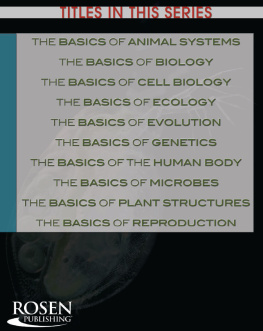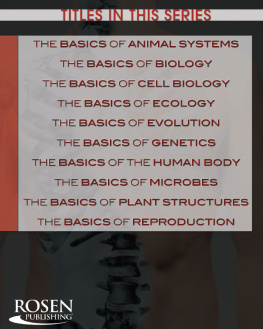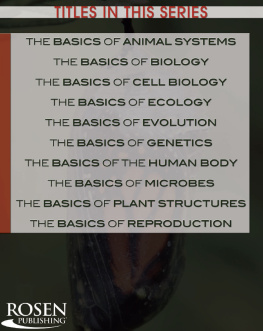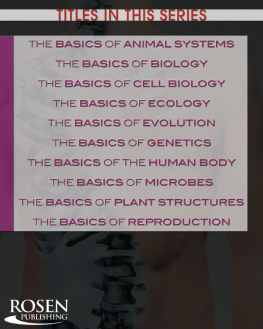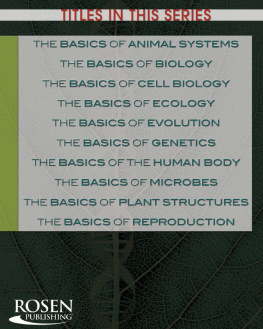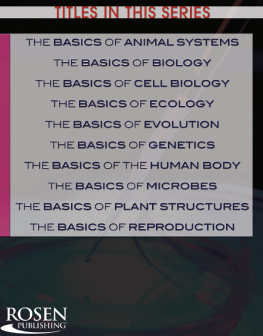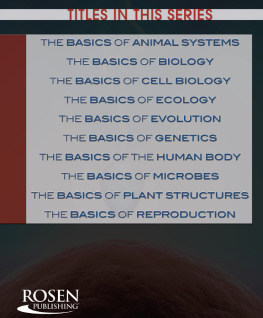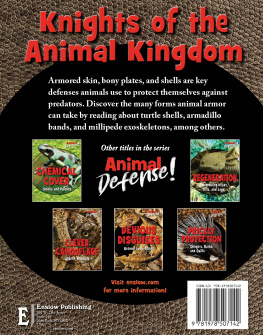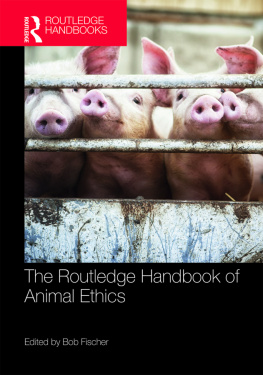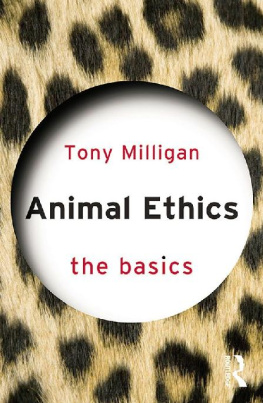This edition published in 2014 by:
The Rosen Publishing Group, Inc.
29 East 21st Street
New York, NY 10010
Additional end matter copyright 2014 by The Rosen Publishing Group, Inc.
All rights reserved. No part of this book may be reproduced in any form without permission in writing from the publisher, except by a reviewer.
Library of Congress Cataloging-in-Publication Data
Wanjie, Anne.
The basics of animal systems/by Anne Wanjie.
p. cm.(Core concepts)
Includes bibliographical references and index.
ISBN 978-1-4777-0556-8 (library binding)
1. AnimalsVariationJuvenile literature. 2. AnimalsJuvenile literature. 3. BiologyJuvenile literature. I. Title.
QL49.W36 2014
507d23
Manufactured in the United States of America
CPSIA Compliance Information: Batch #S13YA: For further information, contact Rosen Publishing, New York, New York, at 1-800-237-9932.
2004 Brown Bear Books Ltd.
CONTENTS
CHAPTER 1: DIVERSITY IN THE ANIMAL KINGDOM
CHAPTER 2: WAYS OF EATING
CHAPTER 3: LOCOMOTION
CHAPTER 4: ADAPTING TO HABITATS
CHAPTER 5: ANIMAL DEFENSE MECHANISMS
CHAPTER 6: MATING AND OFFSPRING
CHAPTER 7: CLOSE ASSOCIATIONS AMONG ANIMALS
CHAPTER 8: ANIMAL SYSTEMS OF COMMUNICATION
CHAPTER 9: BIOGRAPHY: CHARLES DARWIN
GLOSSARY
FOR MORE INFORMATION
FOR FURTHER READING
INDEX
CHAPTER ONE
DIVERSITY IN THE ANIMAL KINGDOM
Animals occur in practically every habitat on Earth. Some filter food; others munch plants or catch other animals.
A camouflaged killer; this flower mantis is colored just like the orchid on which it waits for insect prey.
B iologists divide all living things into vast groups called kingdoms. There are five kingdoms of life: Plants, animals, fungi, bacteria, and protists, though recent research suggests there may be many more. Animals form the kingdom Animalia. Kingdoms are divided further into large groups called phyla (sing. phylum). Each phylum is separated into classes, then orders, families, genera, and species.
TYPES OF SYMMETRY
Most animals are symmetrical. Their body parts match in size, shape, and position on either side of an imaginary line running through an animal.
There are two main types of symmetry in animals. Most, including worms, fish, and humans, are bilaterally symmetrical.
An imaginary line running down the middle of a persons body divides two halves that are mirror images of each other. Animals such as starfish and jellyfish are different. They have a central axis around which body parts radiate. This is called radial symmetry. A few animals, such as sponges, are not symmetrical at all and take an irregular shape.
This fish is bilaterally symmetrical. Cleaving the fish along its middle from head to tail leaves two identical halves.
LIFE WITHOUT A GUT
Almost all animals have guts, but a few species manage without. Beard worms live on hydrothermal vents deep underwater. Cavities inside the worms house colonies of bacteria. The worms take chemicals from the waters around them.
The bacteria break down the chemicals. That allows them to produce sugars that feed the worm in return for a safe home. Most parasitic worms also lack guts of their own. Tapeworms (right), for example, live inside the guts of other animals. Bathed in a sea of nutrient-rich liquid, the worms simply absorb food through their skins.
DESCRIBING ANIMALS
Despite their tremendous diversity, all animals share a number of common features. Animals are multicellular organisms they are formed of many cells that usually form a series of tissues and organs. Animal cells do not have rigid cell walls as those of plants do. Almost all animals possess a gut because they cannot make their own food, as plants can, and must eat to obtain energy. Most animals also have a nervous system that allows them to respond quickly to their environment.
Animals vary enormously in structure, feeding habits, reproduction, and behavior. Their lifestyle as adults may be freeliving, sessile (stay in one place throughout their adult lives, like corals), or parasitic (living in or on another creature). Animals may live in groups, like ants, wildebeest, and prairie dogs, or live alone, seeking a partner only for breeding, as cougars and moose do.
Jellyfish, such as these moon jellyfish, are among the simplest of all animals. Nonetheless, they have nervous and digestive systems, and a sophisticated venom-delivery system. They use it to kill prey such as other invertebrates and fish.
ANIMALS WITHOUT BACKBONES
Most animals are invertebratesthey do not have a backbone. Take a look in your backyard, and you will see invertebrates all around: snails clustering at the bases of plants, earthworms in the soil, and butterflies flapping overhead. There are around 25 invertebrate phyla, including mollusks, echinoderms (starfish and relatives), and a variety of worms. The simplest invertebrates are placozoans, which consist of just a few thousand cells. Sponges are larger and contain millions of cells. Their cells carry out different functions but do not form organs. Jellyfish are more advanced. They have organs and nerve cells so they can respond to the surroundings.
WHY ARE THERE NO GIANT INSECTS?
In terms of numbers insects are the most successful group in the history of life on Earth. However, even the largest insects are no bigger than around 6 inches (15cm) long. Biologists think that is because of the way they breathe. Insects do not have lungs as people do; instead, they have a system of tubes called tracheae. The tracheae carry oxygen from the air to every cell in their bodies. This system becomes inefficient in larger animals, placing a size limit on these creatures. However, in the past there was more oxygen in the atmosphere. Three hundred million years ago giant invertebrates thrived. They included a scorpion 2.5 feet (76cm) long, a 20-inch(50cm) long spider, and a giant dragonfly with a 2-foot (60cm) wingspan.
This dragonfly would be dwarfed by its ancient relatives.
Some invertebrate phyla are very small. The recently discovered Cycliophora, for example, contains just a single tiny species that lives on the lips of Norway lobsters. By contrast, other phyla contain enormous numbers of species. Mollusks include animals as different as clams, slugs, and squid. The most diverse of all animal groups, though, are the arthropods. They include animals such as crabs, spiders, and centipedes, plus the largest group of all, the insects. There are at least 2 million species of insects, but there may be 10 million or more yet to be discovered.

